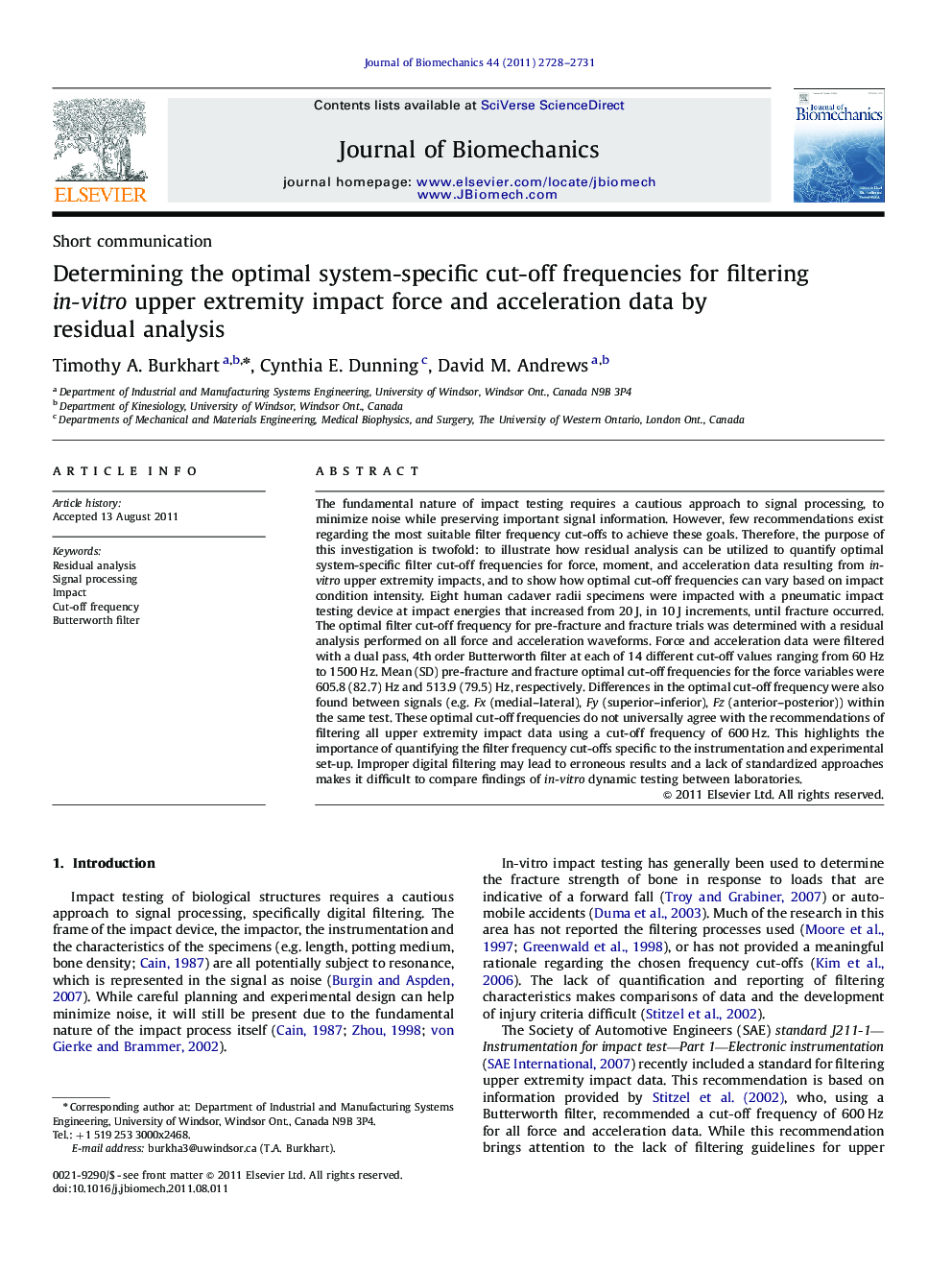| کد مقاله | کد نشریه | سال انتشار | مقاله انگلیسی | نسخه تمام متن |
|---|---|---|---|---|
| 872508 | 910265 | 2011 | 4 صفحه PDF | دانلود رایگان |

The fundamental nature of impact testing requires a cautious approach to signal processing, to minimize noise while preserving important signal information. However, few recommendations exist regarding the most suitable filter frequency cut-offs to achieve these goals. Therefore, the purpose of this investigation is twofold: to illustrate how residual analysis can be utilized to quantify optimal system-specific filter cut-off frequencies for force, moment, and acceleration data resulting from in-vitro upper extremity impacts, and to show how optimal cut-off frequencies can vary based on impact condition intensity. Eight human cadaver radii specimens were impacted with a pneumatic impact testing device at impact energies that increased from 20 J, in 10 J increments, until fracture occurred. The optimal filter cut-off frequency for pre-fracture and fracture trials was determined with a residual analysis performed on all force and acceleration waveforms. Force and acceleration data were filtered with a dual pass, 4th order Butterworth filter at each of 14 different cut-off values ranging from 60 Hz to 1500 Hz. Mean (SD) pre-fracture and fracture optimal cut-off frequencies for the force variables were 605.8 (82.7) Hz and 513.9 (79.5) Hz, respectively. Differences in the optimal cut-off frequency were also found between signals (e.g. Fx (medial–lateral), Fy (superior–inferior), Fz (anterior–posterior)) within the same test. These optimal cut-off frequencies do not universally agree with the recommendations of filtering all upper extremity impact data using a cut-off frequency of 600 Hz. This highlights the importance of quantifying the filter frequency cut-offs specific to the instrumentation and experimental set-up. Improper digital filtering may lead to erroneous results and a lack of standardized approaches makes it difficult to compare findings of in-vitro dynamic testing between laboratories.
Journal: Journal of Biomechanics - Volume 44, Issue 15, 13 October 2011, Pages 2728–2731